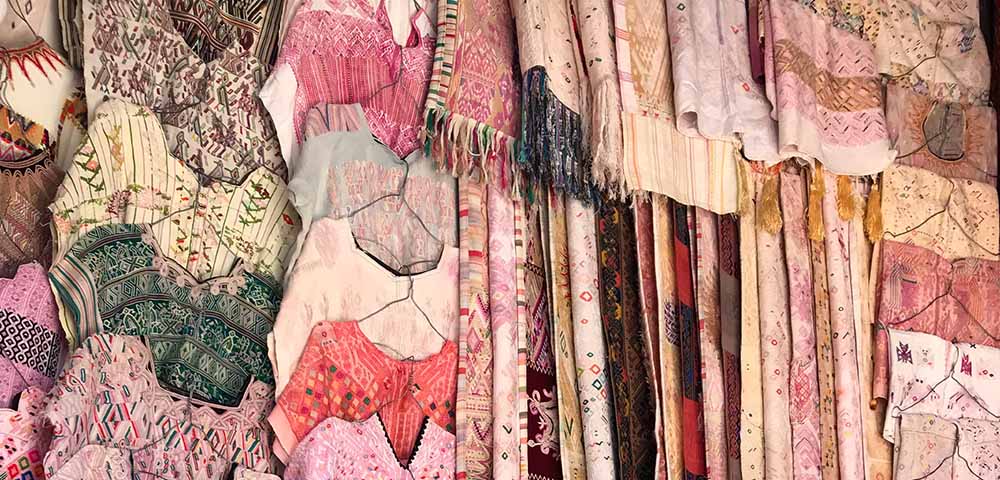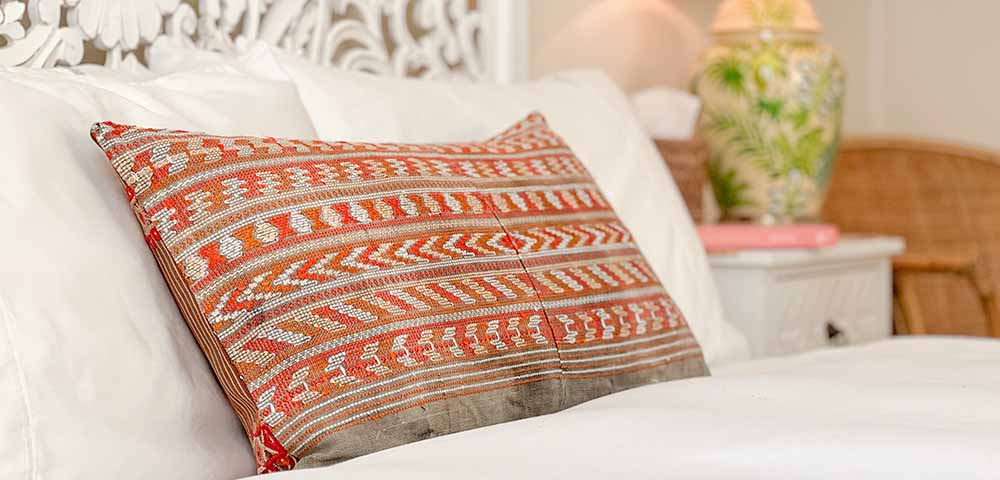Guatemala Textiles - The Best Designs and Colors For Home Decor - Part III

Part three of this series on Guatemalan textiles will cover 5 more regional designs. In total this series covers 12 regional designs. This is a fraction of what Guatemala has to offer in the way of outstanding textiles. However I was only in Guatemala for 3 years and truthfully I probably needed another 2 years to properly study the remaining designs. My choices of designs are based on my personal taste and what I feel attracts the western market. There were many more that I would have loved to have tried but time and budget constraints didn't allow.
Colotenango Textiles
The Colotenango designs are truly unique in Guatemala. To me they have a very contemporary abstract art look to them, I could just imagine a Brooklyn Art Gallery showcasing them. They work brilliantly as pillows in the home or as huipiles to wear. Both the huipil and the corte are incredible textiles. The most common style has a burgundy base with colourful embroidery, but there are occasional variations in colour, which are rare and worth snapping up. The white ones are ceremonial and the rarest as they are passed down in the family.
All the below pillows are made from Colotenango Corte’s.

As you can see in the below photos there are so many things that can be done with the Colotenango corte. This is one of only 2 corte designs where embroidery is used - Tzunil is the only other region I know of that embroiders their cortes. The far majority of Guatemalan corte’s are woven, often on a foot loom.
The bedspread gives you an idea of the size of the textile, they can be used to make clothing, or simply unpick the middle seam to make table runners, wall hangings, shawls and of course cut up for pillows.
 I have never cut up a Colotenango huipil because to me they are perfect just as they are and make much more beautiful tops than they ever would pillows.
I have never cut up a Colotenango huipil because to me they are perfect just as they are and make much more beautiful tops than they ever would pillows.
I would happily stock my shop with a dozen of these incredible pieces of wearable art. They are most commonly found in Antigua shops and the Artisans Market. Do not leave Guatemala without one of these incredible huipiles in your wardrobe.
It is rare for a Colotenango textile to not catch my eye. Usually the only reason I wouldn’t want to buy one is due to damage. This is a regional design that gets it right every time.

Nebaj Textiles
The Nebaj huipil is probably the most tribal of all the Guatemalan huipiles. It is certainly the most popular with festival hippies. They truly are a gorgeous and unique top to wear, and I always get complimented when I wear mine out. There is a variety of styles within the Nebaj design depending on whether its day wear or ceremonial wear. The ones I choose for wearing are all woven with a soft cotton/rayon mix that makes them drape beautifully. There are a lot of Nebaj tops that are made from a thick, heavy cotton and don't fall in a flattering manner.
 Below are a sample of Nebaj huipiles I found on google. These are the most common type to be found in Guatemalas textile markets. The pattern is boldly tribal and many of the colour palettes are strong but beautiful. The Nebaj huipiles I have in my shop (as shown above) tend to have less embroidery and are usually the softer cotton/rayon mix. I also feel the fabulous design stands out strongly when there is less of it. Probably a very western point of view.
Below are a sample of Nebaj huipiles I found on google. These are the most common type to be found in Guatemalas textile markets. The pattern is boldly tribal and many of the colour palettes are strong but beautiful. The Nebaj huipiles I have in my shop (as shown above) tend to have less embroidery and are usually the softer cotton/rayon mix. I also feel the fabulous design stands out strongly when there is less of it. Probably a very western point of view.
 Nebaj ceremonial tzute’s are also an incredible textile, making exquisite table cloths, wall hangings and standout shawls. The tzute’s are such perfect table cloths that its a shame to cut them into pillows, even though they make fabulous tribal pillows.
Nebaj ceremonial tzute’s are also an incredible textile, making exquisite table cloths, wall hangings and standout shawls. The tzute’s are such perfect table cloths that its a shame to cut them into pillows, even though they make fabulous tribal pillows.

San Lucas Huipiles
This design gets passed up a lot due to its simplicity when compared to so many of the other designs, but I personally think there's a beautiful elegance to the design. The tiny embroidered shapes are often stylised birds, dogs or people if you look closely. The most popular colour for San Lucas huipiles is again the constant red seen all over Guatemala, however if you keep your eye out they also specialise in an array of jewel colours - many gorgeous blues, emeralds and purples. The black huipiles are rare, but make incredibly elegant bedroom pillows.

Below is a selection of San Lucas huipiles I found on the internet. They are not very commonly sold in the west and were quite hard to find. I think perhaps its hard to visualise just how pretty they are once made into pillows with their clear vibrant colours and the striped detail across the front.

Quetzaltenango (Xela) Huipiles
Xela huipiles are a simply gorgeous design, and each time I've uploaded them to my website they have sold out very quickly. For some reason though most Xela huipiles I came across are sadly machine made. I actually don't know why just Xela does this, and of course we have to accept that eventually all huipiles will become machine made and this stunning art will die out in Guatemala as it has in many other countries.
 Like all the regional designs, Quetzaltenango have a few favourite colour palettes, purple and yellow being the most popular choice. This level of boldness is a hard call to decorate with or to wear in our society. That along with so many Xela huipiles now being machine made means there are less and less of this lovely design being exported to the west.
Like all the regional designs, Quetzaltenango have a few favourite colour palettes, purple and yellow being the most popular choice. This level of boldness is a hard call to decorate with or to wear in our society. That along with so many Xela huipiles now being machine made means there are less and less of this lovely design being exported to the west.

Santa Catarina Huipiles
These huipiles are a truly beautiful design with their exotic birds, butterflies and animals. Their stylised animals are unique to their region, delicate and elegant and not seen anywhere else in Guatemala. They have a distinct colour palette that is rarely deviated from. Mostly pretty blues and delicious turquoises, but the colour scheme that really stands out is the blue embroidery on deep red. It is a bold and unique combination that sets them apart. Santa Catarina is a tiny village on Lake Atitlan, so the choice of vintage huipiles is very limited.
I regret not buying them to make pillows with, they would have been perfect beach bohemian pillows, however I only chose a handful when the colour palette was so uniquely different from their usual that they really stood out.
 Except for the warm brown huipil in the bottom row the rest of the colour palettes below are very typical of Santa Catarina. Extremely bright and fresh. Personally I prefer a simpler range of colours in general for pillows to decorate with. This design is very complex and when mixed with a lot of different colours I feel it becomes too busy and the beauty of the design is lost.
Except for the warm brown huipil in the bottom row the rest of the colour palettes below are very typical of Santa Catarina. Extremely bright and fresh. Personally I prefer a simpler range of colours in general for pillows to decorate with. This design is very complex and when mixed with a lot of different colours I feel it becomes too busy and the beauty of the design is lost.

This concludes my 3 part series on Guatemalan textiles. I hope you have enjoyed exploring the incredible textile art of the Mayan people in Guatemala and are inspired to add this exotic country to your wish list of places to visit so you too can experience first hand their world famous textile markets.
Bye for now,
Willow xxx


